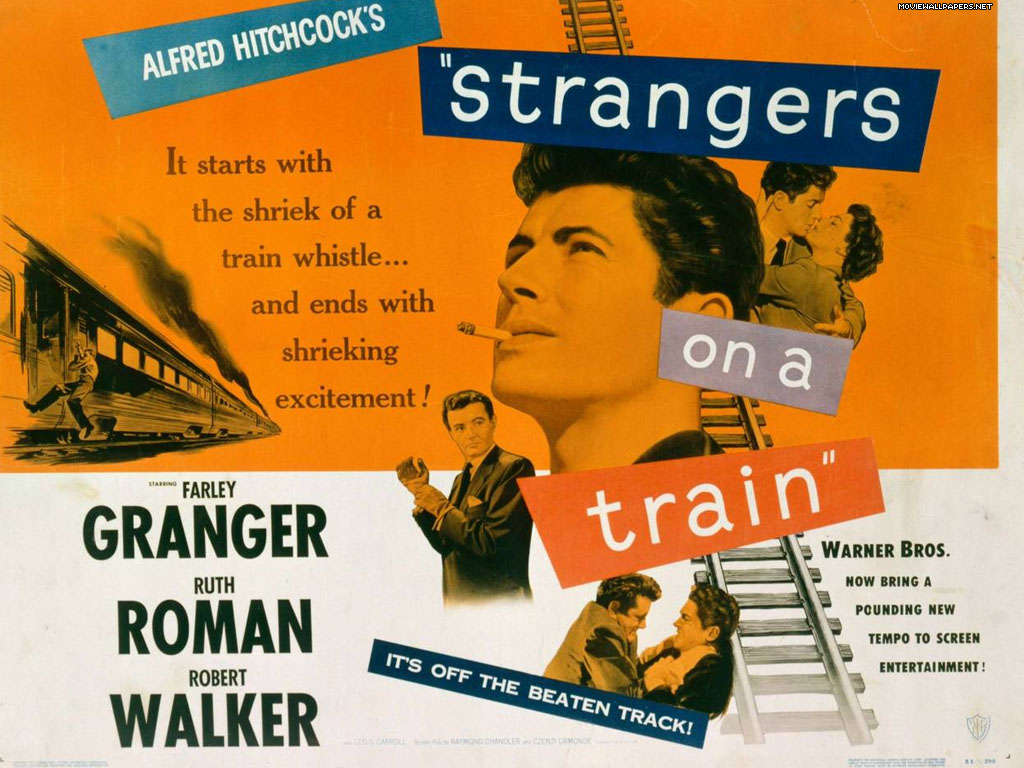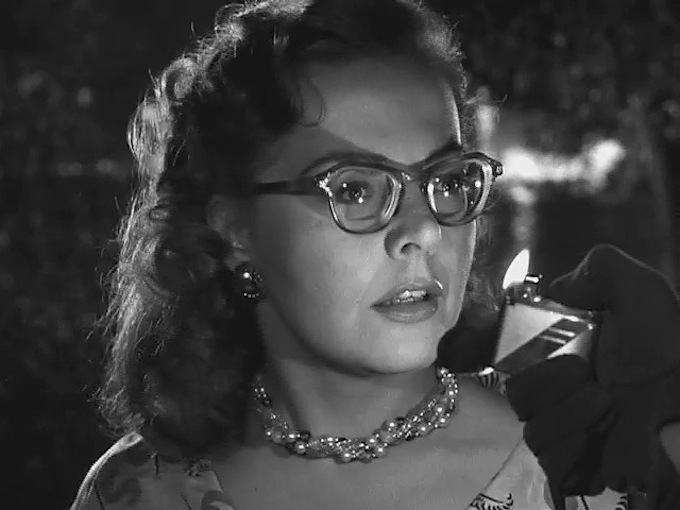Strangers on a Train, USA 1951.
Posted by keith1942 on May 8, 2015
I was able to revisit this film at the Leeds Young Film Festival. We were fortunate to have the film in a relatively good 35mm print. Intriguingly I realised later that this was the ‘pre-release’ version, which only came to light in 1995. Michael Walker, in Hitchcock’s Motifs (2005), provides a description of this version: it has additional footage but lacks the final humorous encounter by Guy and Ann on a train. Michael also makes the point that Strangers on a Train has the greatest number of the motifs that he identified across Hitchcock’s work: this makes it not only a very enjoyable but also a very interesting film.
The film has a striking opening as we follow two pairs of shoes from a taxi rank through Central Station to a waiting train. The shoes suggest something of the owners. The camera shots are deliberately placed in opposing angles. And when the shoes finally meet in the lounge car on the train a slight nudge provides an introduction. Guy Haynes [Farley Granger) is a restrained conventional character, a successful tennis star: he works for a US senator and is having a romance with his daughter Ann (Ruth Roman). Bruno Anthony (Robert Walker) does not work but lives off his affluent parents: He is coded as gay. He appears exuberant and is obviously unconventional. What they have in common is a problem: in Guy’s case a separated and pregnant wife who will not divorce him: in Bruno’s case a father who he finds oppressive, ‘I hate him’. Out of this chance encounter the original Patricia Highsmith novel developed a distinctive murder mystery. If you are familiar with Highsmith’s writings then it will come as no surprise that the film makes considerably alterations to the plot of the novel, especially in the latter stages. Whilst the script removes the darker aspects of the novel it also introduces effective additions: for example the issue of competitive tennis which provides a suspenseful climatic sequence.
The audience can enjoy a film that has many of Hitchcock’s virtues. The plotting is ingenious and absorbing. The mechanics of the murder investigation are carefully spread out over the film. The character of the apparently innocent man provides a moral force to the tale. And the stylistic touches, including expressionist techniques and carefully suspenseful editing, add to the brio and allure of the film.
The most notable of these techniques is a reflection of a murder in the lenses of a pair of spectacles. The spectacles are passed to Guy by Bruno and then seem to disappear from the plot. They clearly suggest overtones of guilt but unlike another object – a lighter – their fate is unknown. Michael Walker also draws attention to another facet – both Miriam and Ann’s sister Patricia (Patricia Hitchcock) have a similar look, partly due to the spectacles they wear. He makes a general point regarding women characters who wear spectacles:
Apart from the connotations of ‘cleverness’ (in itself, a potential threat to a man), they also serve to draw attention to the fact that she was looking and lent her a certain intensity, the sort of intensity that men, apparently, find disturbing.
This is apt, for both Miriam and Patricia are ‘sassy’ women: they answer back to men. Miriam does this in an argument with Guy: Patricia to her father, a patriarchal figure who is also a lawmaker. Ann on the other hand is the dependent non-threatening woman. She stands by Guy even to the point when he appears to be guilty of a crime.
This gives the film a subversive edge, but the resolution – different from that offered by Patricia Highsmith – recoups this for the audience.


Leave a comment